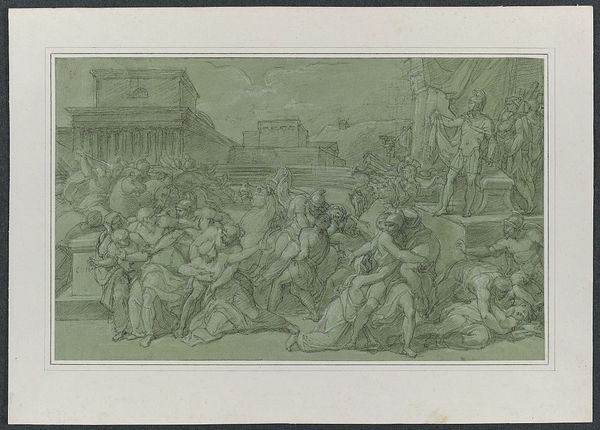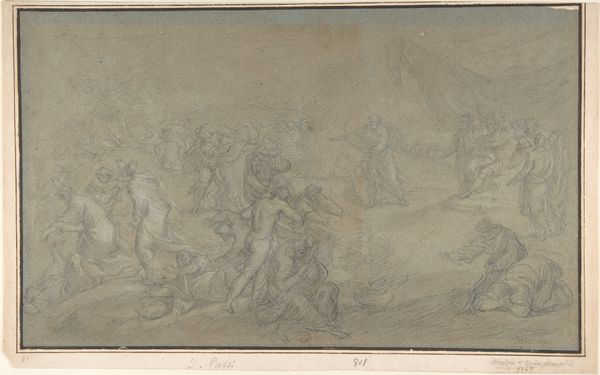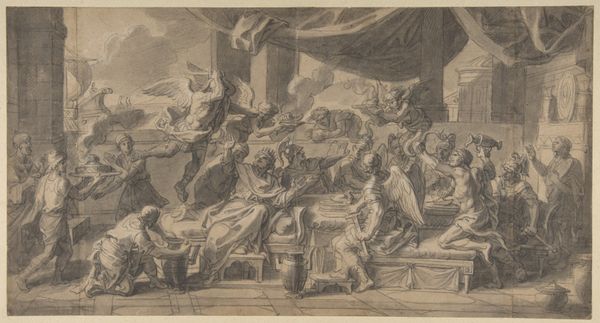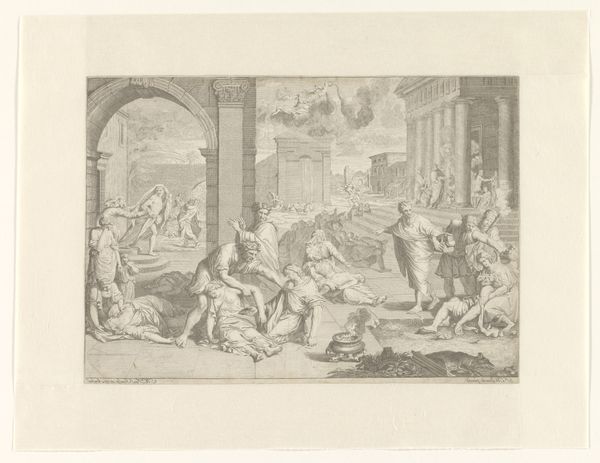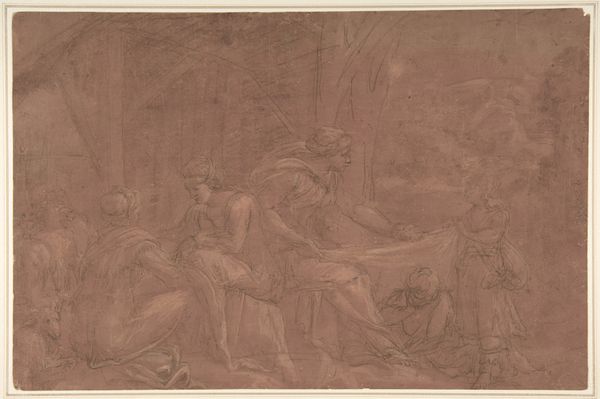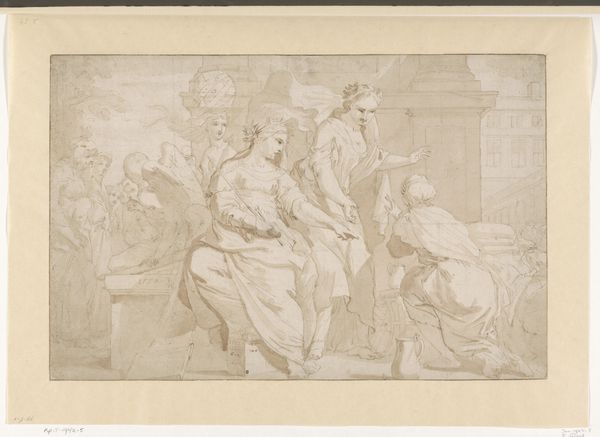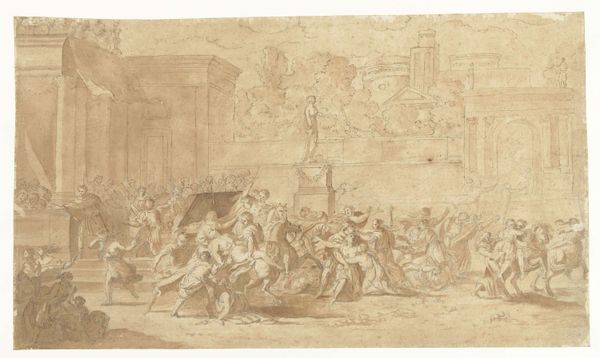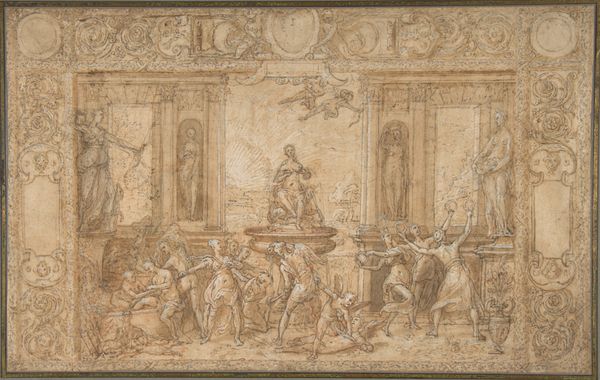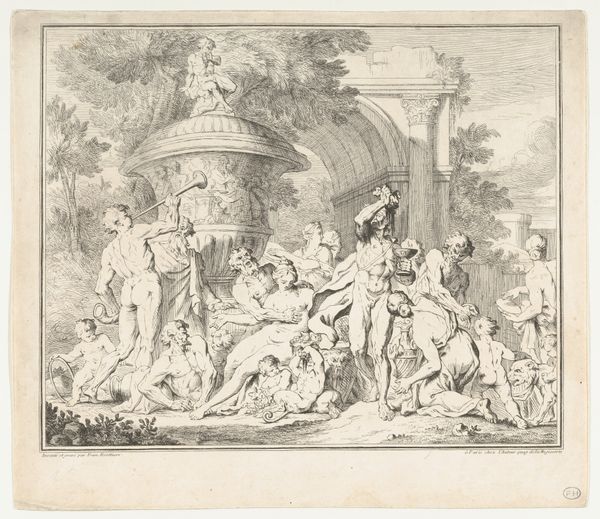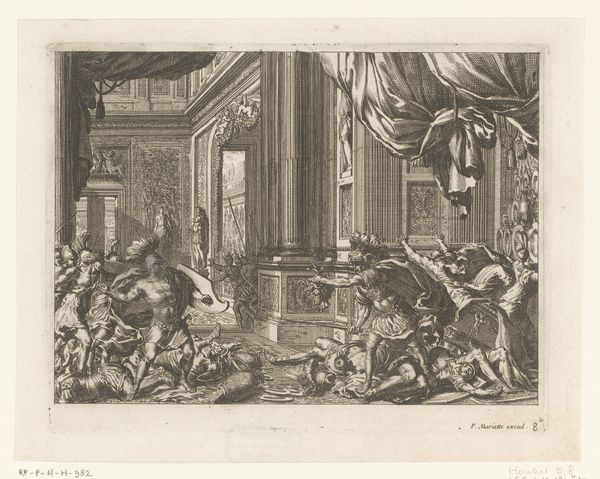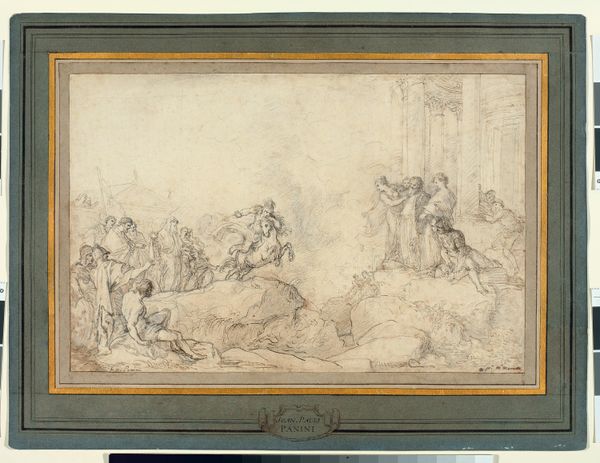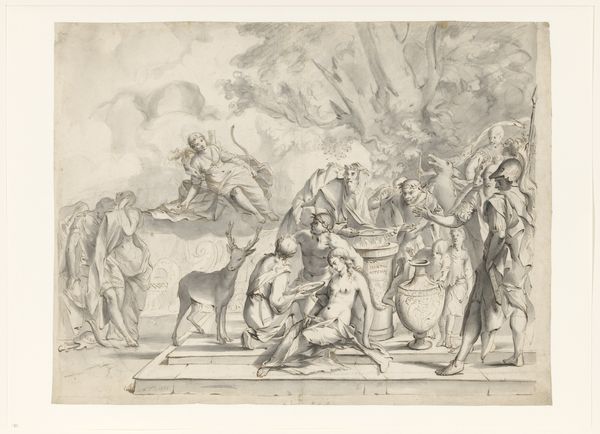
drawing, paper, pencil
#
drawing
#
allegory
#
baroque
#
figuration
#
paper
#
pencil
#
history-painting
Dimensions: height 280 mm, width 454 mm
Copyright: Rijks Museum: Open Domain
Victor Honoré Janssens created this drawing, Bacchanaal, in the 17th or 18th century. What strikes you immediately is the monochrome palette and the dynamic composition, filled with classical figures in a state of revelry. The figures are distributed across the pictorial space, creating a sense of movement and chaotic energy. Janssens uses line and form to convey the bacchanal's exuberance. The architectural backdrop provides a classical framework, yet the figures break free from this structure, suggesting a release from order and reason. The sketch-like quality enhances the sense of immediacy and freedom. In classical art, such scenes often served to explore themes of ecstasy, irrationality, and the blurring of boundaries between civilization and nature. Janssens invites us to consider the interplay between restraint and abandon, and the structured world's susceptibility to the Dionysian impulse. Note how the loose handling of line and tone undermines the very clarity and order that the architectural setting tries to impose. This tension makes the drawing a compelling study in contrasts and the enduring power of irrationality.
Comments
No comments
Be the first to comment and join the conversation on the ultimate creative platform.
